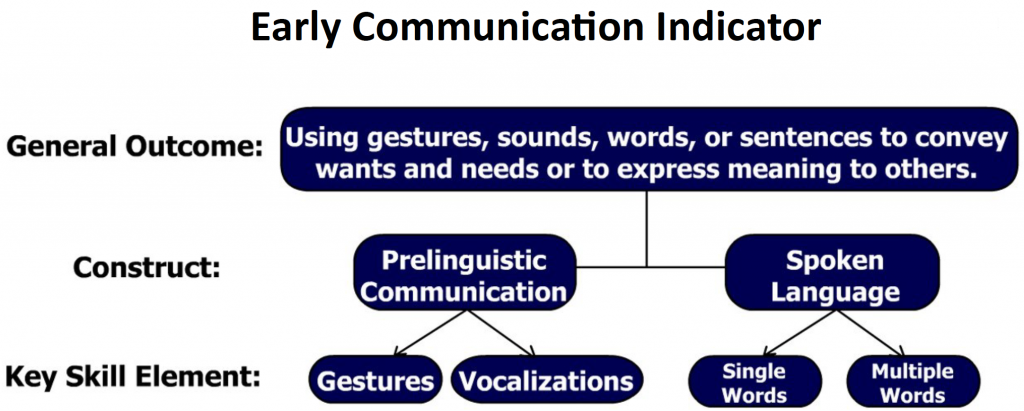 Early Communication Indicator (ECI)
Early Communication Indicator (ECI)
The Early Communication Indicator (ECI) for children birth to age 3 is a sensitive, easy to administer measure of communication (e.g., Luze et al., 2001). The ECI is a brief, repeatable, play-based, observational measure of a child’s communicative performance during a 6-minute play period with a familiar adult. The play session is standardized around one of two toys – either the Fisher-Price House or Farm.
Four communicative behaviors, or Key Skill Elements selected and validated through research, make up the ECI’s total communication indicator: Gestures, Vocalizations, Single Words, and Multiple Words. These skills were initially selected based on a conceptual review of the literature and confirmed through validation with other criterion measures of expressive communication. These skills were selected to represent the prelinguistic domain (Gestures and Vocalilzations) and the spoken or signed language domain (Single and Multiple Words). The Total Weighted Communication score is derived by summing these four skills and giving additional ‘weight’ to each single word (x2) and each multiple word (x3).
The following key skill elements were not included because they did not add to the sensitivity of the ECI: Coordinated Attention, because of its low frequency of occurrence and difficulty obtaining inter-observer agreement, and Social Attention or eye contact, because it did not show growth over time.
